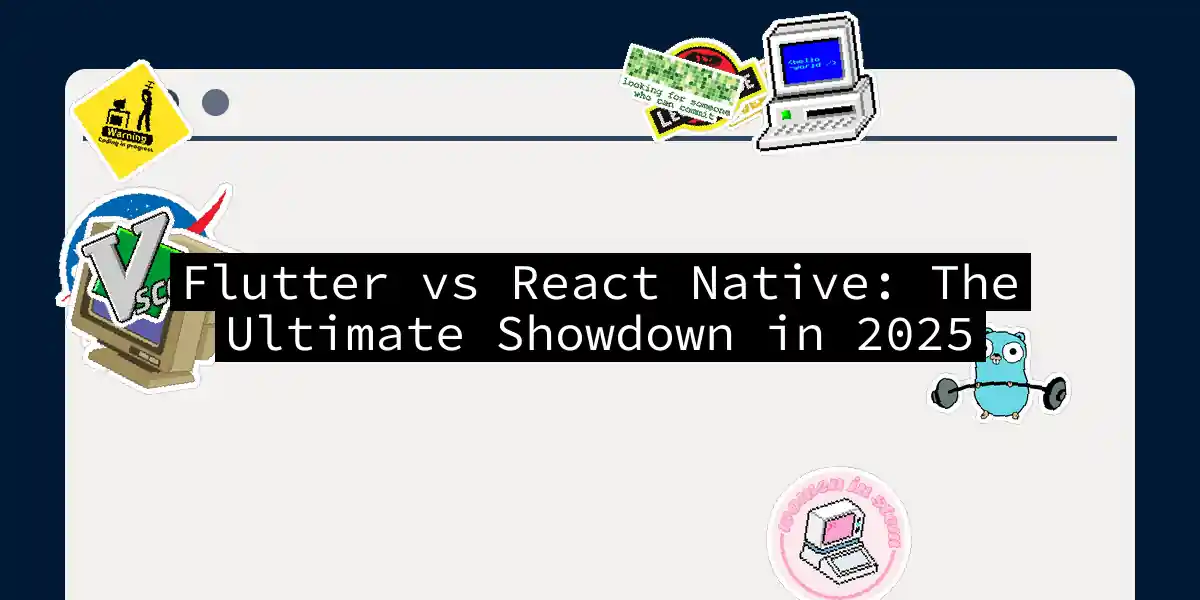Picture this: two framework gladiators enter the digital Colosseum. One’s armed with Dart-powered widgets, the other wields JavaScript like Thor’s hammer. Let’s settle the “which framework should I choose?” debate once and for all - no corporate bias, just cold hard code and sarcastic commentary.
Setup Showdown: First Blood
React Native (the JavaScript veteran):
npx react-native init MyApp --template react-native-template-typescript
npx pod-install
Watch Xcode throw a fit if your Ruby version’s wrong. Again. Flutter (Google’s overachiever):
flutter create my_app
cd my_app
flutter run -d all
Congratulations - you’ve just created 3 platform builds simultaneously. Your fans (and CPU) are screaming.
Pro tip: Add --platforms=android,ios,web to target specific platforms and avoid awakening the Windows/Linux demons.
The “Hello World” Gauntlet
React Native’s emotional support animal:
// React Native
import {Text, View} from 'react-native';
const App = () => (
<View style={{flex: 1, justifyContent: 'center'}}>
<Text>Hello from JSX Land!</Text>
</View>
);
Flutter’s widget army:
// Flutter
import 'package:flutter/material.dart';
void main() => runApp(
const MaterialApp(
home: Scaffold(
body: Center(
child: Text('Widgets... widgets everywhere!'),
),
),
),
);
Notice how Flutter requires 5 widgets just to say hello? That’s either engineering rigor or widget hoarding syndrome.
State Management: The Cage Match
React Native’s Hooks Addiction:
const [count, setCount] = useState(0);
return (
<Button
title={`Clicked ${count} times`}
onPress={() => setCount(c => c + 1)}
/>
);
Flutter’s Blocbuster Approach:
final _counter = Bloc<int, int>(0);
ElevatedButton(
onPressed: () => _counter.add(state + 1),
child: BlocBuilder(
builder: (context, state) => Text('Count: $state'),
),
)
React Native: “I just want to count!” Flutter: “First we need 3 layers of abstraction and a state management library…"
Performance Thunderdome
2025’s game-changers:
- React Native’s Bridgeless Architecture (): JSI makes JS↔Native communication 2.3x faster than Tinder’s match rate
- Flutter’s Impeller Engine (): Renders UI like Picasso on energy drinks Real-world test: Scrolling a 10,000-item list
- React Native: 58 FPS (with optimizations)
- Flutter: 60 FPS (while rendering 3 hidden widgets)
The Verdict: Choose Your Fighter
When to pick React Native:
- Your team already knows React
- You need OTA updates yesterday
- You enjoy debugging native modules at 3 AM When to pick Flutter:
- Designers want pixel-perfect control
- You’re starting from scratch
- You enjoy explaining “what’s Dart?” at meetups Remember: Both frameworks can make great apps - the best framework is the one your team won’t abandon after 3 months.
Battle-Tested Tips
- React Native Pro Move:
npx react-native run-android --variant=release --port=9090
Because debug builds are for quitters. 2. Flutter Secret Weapon:
devTools: {
'debugPaintSizeEnabled': false,
'debugPaintLayerBordersEnabled': true,
}
Become a widget layout shaman. Final thought: Whether you choose Flutter’s widget wonderland or React Native’s JavaScript juggernaut, just remember - the real winner is cross-platform development. Now go build something that crashes in both Android and iOS equally! 🚀
